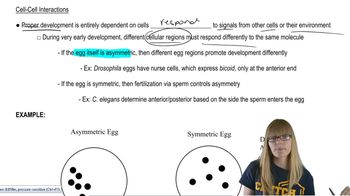Explain how the expression of a single gene can be quickly, efficiently, and specifically shut down at the transcriptional, posttranscriptional, and posttranslational stages through the coordinated expression of a transcriptional repressor, an miRNA, and a ubiquitin ligase.
Isoginkgetin is a cell-permeable chemical isolated from the Ginkgo biloba tree that binds to and inhibits snRNPs. Would this be most problematic for E. coli cells, yeast cells, or human cells? Why?
 Verified step by step guidance
Verified step by step guidance
Verified Solution
Key Concepts
snRNPs (small nuclear ribonucleoproteins)

Eukaryotic vs. Prokaryotic Cells

Cell Permeability and Chemical Inhibition

Recent observations indicate that alternative splicing is a common way for eukaryotes to expand their repertoire of gene functions. Studies indicate that approximately 50 percent of human genes exhibit alternative splicing and approximately 15 percent of disease-causing mutations involve aberrant alternative splicing. Different tissues show remarkably different frequencies of alternative splicing, with the brain accounting for approximately 18 percent of such events [Xu et al. (2002). Nucl. Acids Res. 30:3754–3766].
Why might some tissues engage in more alternative splicing than others?
Isoginkgetin is a cell-permeable chemical isolated from the Ginkgo biloba tree that binds to and inhibits snRNPs.
What types of problems would you anticipate in cells treated with isoginkgetin?
